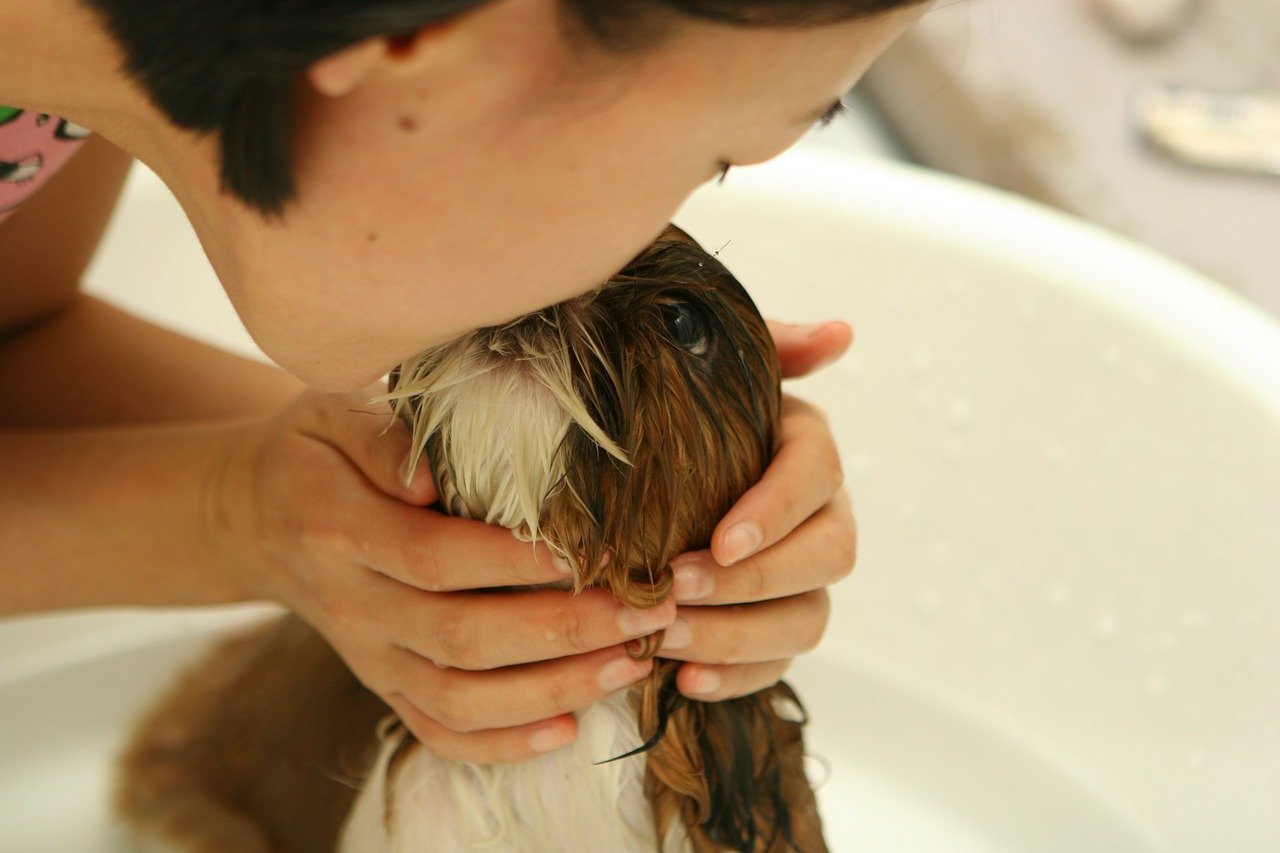Canine Atopy Guide: Causes, Symptoms, and Treatment of Dogs with Atopic Dermatitis

Has your itchy dog recently been diagnosed with atopic dermatitis (also called canine eczema or atopy)? Do you still have questions about what this diagnosis means and what to expect from treatments? Keep reading to find out more about how dogs develop atopy, what signs may be seen, and how this disease is treated.
Are you concerned about your pet?
Book a video consultation with an experienced veterinarian within minutes.
- Professional vet advice online
- Low-cost video vet consultations
- Open 24 hours a day, 365 days a year
What is Canine Atopy?
Dogs with atopic dermatitis have a defect with their skin’s natural protective barrier. Most of the allergens that cause itch in these dogs enter through contact with their skin and its defective barrier.
Allergen is the general term for the specific substance that causes the allergy. These allergens cause inflammation or irritation of the skin due to an immune response in that particular dog, when the allergens are inhaled or are absorbed through the dog’s skin.
How do dogs get atopy?
Often dogs who develop atopy have a familial link or are genetically more likely to develop this disease due to traits that they get from their parents. This is why dogs with atopy that are related are more likely to develop this condition. Generally the development of atopy is first noted when dogs are between 2-6 years of age.
The following breeds are predisposed to inherit atopy:
- Labrador Retriever
- Golden Retriever
- Boxer
- Cocker Spaniel
- Bulldogs
- Terriers (most, including Pitbulls)
- German Shepherds
Even if your dog is not one of these breeds or is a mixed breed dog, they too may develop atopic dermatitis.

Symptoms of Atopic Dermatitis in Dogs
Dogs with atopic dermatitis develop recurrent issues of itchiness (pruritus) where they lick, chew and scratch at themselves. They may also develop secondary skin and/or ear infections due to their skin’s weakened barrier function. With atopic dogs, clinical signs of itch and skin irritation may happen during specific seasons of the year (Spring, Fall, etc.) or may be noted year-round.
Besides being markedly itchy, dogs with atopic dermatitis often have:
- areas of reddened skin
- raised bumps (pustules or papules)
- scratches
- crusts
- alopecia (areas of fur loss)
- thickened skin
- areas of darker/grey pigmented skin (in chronic cases)
The itchy areas on these dogs often include the armpits, belly, in between toes, and the area around the dog’s eyes, ears, mouth or bottom.
How will the vet test my dog for atopy?
As there is no specific test to diagnose atopic dermatitis, this disease is diagnosed based upon age of the patient when signs were first noted, the breed, symptoms, and then by ruling out other underlying causes for dermatitis (inflammation of the skin) such as flea allergies, and food intolerance/allergies, etc.
Initially, your dog’s vet may recommend any combination of the following tests to help determine the cause of your dog’s skin issues:
- Medication Trial (antihistamine, Cytopoint, Apoquel or Corticosteroid (steroid))
- Diet Trial (offering a food containing protein and carbohydrate source that your dog has not had before)
- Skin Scrape (checking for mites)
- Skin Biopsy
- Intradermal Skin Testing (determines the allergens affecting your dog)
- Bloodwork to check for specific allergies, hypothyroidism, or Cushing’s Disease
Treatment and Management Options for Atopic Dogs:
- Identification and avoidance of the allergen
- Identification and treatment of any secondary skin infection (bacteria and/or yeast)
- Improvement in skin and coat hygiene and care (e.g. bathing)
- Reduction of itching and skin wounds with medications (e.g. topical and/or systemic)
- Targeted therapy of the allergy with intradermal allergy testing and desensitization
As with allergies in people, canine atopic dermatitis is a life-long condition that can negatively affect both the dog’s and owner’s quality of life. Preventing or minimizing the frequency of skin flare-ups is the goal. Flare ups of skin irritation and itch can be lessened by identifying and desensitizing the animal to the offending environmental allergen(s).
Once a dog is determined to have atopy, allergy testing (intradermal) may be performed by a veterinary dermatologist to establish the specific allergens that are triggering the allergy issues.
To desensitize a dog to their allergen(s) the veterinary dermatologist will perform an intradermal skin test on your dog and then formulate an injectable to gradually expose your dog’s immune system to a very low dose of the allergen(s) that are causing their itch, increasing the dose concentration over time. To determine the full benefit that your dog will have from immune modification, they may need to be treated for a year. If the immunotherapy is helping control your dog’s atopy, this therapy will need to be continued long-term.
Some of the treatment options that your vet may recommend are as follows:
- Medicated baths with a shampoo made specifically for dogs with dermatitis
- Flea Prevention/Control
- Supplements
- Cytopoint
- Apoquel
- Antihistamines
- Antibiotics and Antifungals (to treat secondary skin infections if found)
- Immunotherapy (when exact allergens causing the issue have been identified)
- Corticosteroids

Can I give over-the-counter medications to my dog for their itchy skin?
Do not give over-the-counter (OTC) medications to your dog without talking to your vet first. If not given appropriately, OTC medications can be dangerous.
Home Treatment for Canine Atopy
There are several things you can do at home to keep your dog as comfortable as possible while waiting for your vet appointment and allergy consult.
A few safe treatments include:
- If your dog is licking or chewing excessively at themselves, an Elizabethan collar (cone) may be helpful to lessen further damage to their skin.
- If your dog is itchy everywhere, you may bathe your dog with a mild shampoo (i.e. oatmeal-based) daily to every other day. Make sure to use lukewarm water and thoroughly rinse the shampoo away.
- Any individual wounds may be cleaned with a mild soap or dilute betadine solution twice daily and then blotted dry.

When Should I Schedule a Consult with a Veterinarian?
If your dog is experiencing any of the following symptoms, it’s time to schedule a vet visit:
- Scratching more than usual and seems uncomfortable.
- Licking, chewing, or scratching to a point where they are developing sores.
- Fur loss
- Head shaking
- Scratching at ears
- Lethargy
- Lack of appetite
Read More:
Dermatitis in Dogs: Causes, Symptoms, and Treatment
Why does my dog have a skin rash?
Need to speak with a veterinarian about your dog’s atopic dermatitis or another condition?
Click here to schedule a video consult to speak to one of our vets. You can also download the FirstVet app from the Apple App Store and Google Play Stores.
More articles about Dog
Are you concerned about your pet?
Book a video consultation with an experienced veterinarian within minutes.